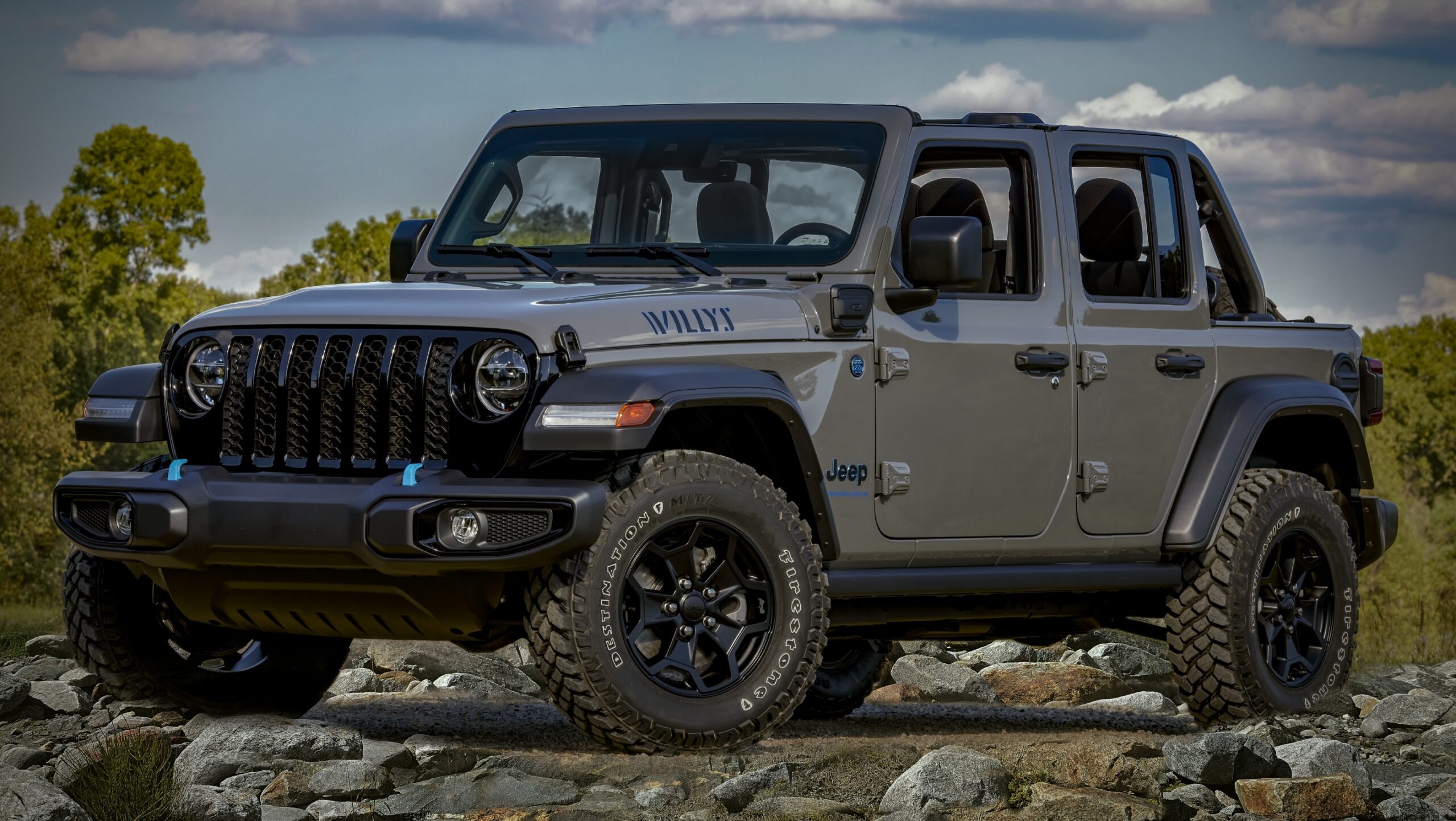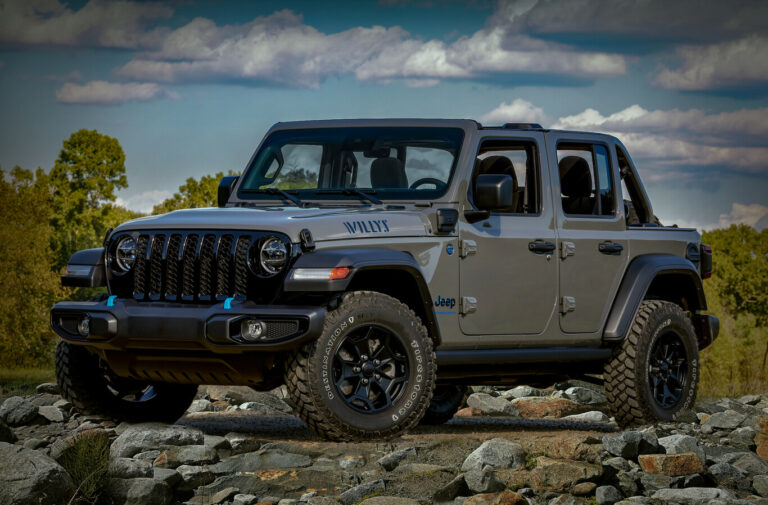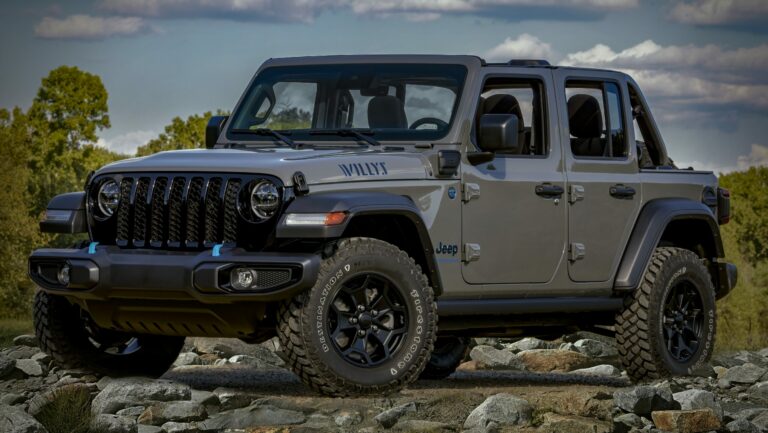Jeep Wrangler Salvage For Sale: Your Ultimate Guide to Unearthing Value and Adventure
Jeep Wrangler Salvage For Sale: Your Ultimate Guide to Unearthing Value and Adventure jeeps.truckstrend.com
The allure of a Jeep Wrangler is undeniable. Its iconic design, legendary off-road capability, and the sheer sense of freedom it offers have cemented its place as a beloved vehicle worldwide. However, the price tag for a new or even a well-maintained used Wrangler can be a significant barrier for many enthusiasts. This is where the world of Jeep Wrangler Salvage For Sale steps in, offering a unique avenue for those willing to roll up their sleeves and invest some elbow grease.
Buying a salvage title Jeep Wrangler isn’t for the faint of heart, but for the informed and prepared buyer, it can unlock incredible value, serve as a perfect parts donor, or become the foundation for a custom build that would otherwise be out of reach. This comprehensive guide will delve deep into everything you need to know about navigating the landscape of salvage Wranglers, from understanding the titles to the practical steps of bringing one back to life.
Jeep Wrangler Salvage For Sale: Your Ultimate Guide to Unearthing Value and Adventure
Understanding the Salvage What Does it Mean?
Before diving into the "for sale" aspect, it’s crucial to grasp what a "salvage title" truly signifies. A salvage title is issued by a state Department of Motor Vehicles (DMV) when an insurance company declares a vehicle a "total loss" after an incident. This declaration isn’t necessarily because the vehicle is irreparable, but rather because the estimated cost of repairs (including parts, labor, and potential rental car costs) exceeds a certain percentage of the vehicle’s actual cash value (ACV). This percentage varies by state, typically ranging from 70% to 100%.
Common reasons a Jeep Wrangler might receive a salvage title include:
- Collision Damage: The most frequent cause, ranging from minor fender-benders to severe structural damage.
- Flood Damage: Vehicles submerged in water, which can lead to extensive electrical and mechanical issues, often unseen.
- Theft Recovery: If a stolen vehicle is recovered but damaged, stripped, or gone for an extended period during which an insurance claim was paid out.
- Vandalism: Extensive damage from malicious acts.
- Fire Damage: Varying degrees of damage from a fire.
- Hail Damage: Severe cosmetic damage that can be expensive to repair.

It’s important to note that a salvage title indicates the vehicle is not road-legal in its current state. It must undergo repairs and a rigorous inspection process to be re-titled as "rebuilt" or "reconstructed" before it can be legally registered and driven on public roads.
Why Buy a Salvage Jeep Wrangler? The Benefits Explored
Despite the inherent challenges, the appeal of a salvage Jeep Wrangler is significant for several reasons:
- Unbeatable Cost Savings: This is by far the primary motivator. A salvage Wrangler can be purchased for a fraction of the cost of a clean-title vehicle, often 50-70% less than market value. This dramatic price difference can make owning a Wrangler a reality for those on a tighter budget.
- Ideal for Parts Donors: If you already own a Wrangler and need specific components (engine, transmission, axles, body panels, interior parts), buying a salvage vehicle with damage in other areas can be vastly more cost-effective than purchasing individual new or used parts. You get a whole vehicle for the price of a few major components.
- The Ultimate Project Vehicle: For the mechanically inclined and DIY enthusiasts, a salvage Wrangler is a blank canvas. It’s an opportunity to learn, hone your repair skills, and customize a vehicle exactly to your specifications without the guilt of cutting up a perfectly good, expensive Jeep. This is particularly appealing for off-road builds, rock crawlers, or overland rigs where extensive modifications are planned anyway.
- Learning and Skill Development: Repairing a salvage vehicle provides invaluable hands-on experience with automotive mechanics, bodywork, and electrical systems. It’s a practical education that can save you money on future repairs and instill a deeper understanding of your vehicle.
- Environmental Friendliness: By repairing and repurposing a vehicle that might otherwise be scrapped, you’re contributing to sustainability and reducing waste in the automotive industry.
The Risks and Challenges: A Realistic Perspective
While the benefits are compelling, it’s crucial to approach a salvage Wrangler purchase with eyes wide open to the potential pitfalls:
- Undisclosed/Hidden Damage: The most significant risk. What appears to be minor cosmetic damage might mask severe structural, electrical, or mechanical issues that are expensive and difficult to diagnose. Flood damage, in particular, can lead to long-term electrical nightmares and rust.
- Repair Costs Can Escalate: The low purchase price can be deceptive if repair costs balloon. It’s easy to underestimate the total expense of parts, specialized tools, and labor (if you’re not doing it yourself). Always factor in a contingency budget.
- Difficulty in Obtaining a Rebuilt Each state has specific requirements for converting a salvage title to a rebuilt title. This often involves inspections by state authorities, proof of repairs (receipts for parts, photos), and can be a time-consuming and bureaucratic process. Failure to meet these requirements means the vehicle remains unsalable and unregisterable.
- Lower Resale Value: Even after obtaining a rebuilt title, the vehicle will always carry that designation, significantly impacting its resale value. It will almost always be worth less than an equivalent clean-title vehicle, making it a poor investment if your primary goal is future profit.
- Insurance Challenges: Insuring a rebuilt title vehicle can be more difficult and potentially more expensive. Some insurance companies may refuse to offer full coverage (comprehensive and collision), or they may offer it with a lower payout in the event of a future claim, factoring in its "rebuilt" status.
Where to Find Salvage Jeep Wranglers For Sale
The digital age has made finding salvage vehicles much easier. Here are the primary sources:
- Online Salvage Auctions:
- Copart (copart.com): One of the largest global online auction platforms for salvage vehicles. They have a massive inventory, including a wide range of Jeep Wranglers with various types of damage.
- Insurance Auto Auctions (IAAI – iaai.com): Another major player, similar to Copart, with extensive inventory.
- Adesa (adesa.com): Primarily for dealers, but some salvage vehicles may be available through specific programs.
These platforms require registration (sometimes a paid membership) and often have specific bidding rules. Many allow public access, but some require a dealer license for certain vehicles.
- Local Salvage Yards/Auto Recyclers: Many local junkyards or auto salvage yards acquire total-loss vehicles directly from insurance companies. While their inventory might be smaller and less organized than online auctions, you can often inspect the vehicle in person more easily.
- Specialized Auto Parts Dealers: Some businesses specialize in selling parts from wrecked vehicles and may offer complete salvage vehicles that they deem suitable for repair or parting out.
- Online Marketplaces (with caution): Websites like eBay Motors, Facebook Marketplace, and Craigslist occasionally list salvage title vehicles directly from individuals. Exercise extreme caution here, as these platforms offer less protection than dedicated auction sites. Always insist on a VIN check and in-person inspection.
The Buying Process: A Step-by-Step Guide
Purchasing a salvage Jeep Wrangler requires diligence and a methodical approach:
- Research and Set a Budget: Determine which Wrangler generation (YJ, TJ, JK, JL) you’re interested in, what your mechanical skill level is, and how much you’re willing to spend, including potential repair costs.
- Identify Potential Vehicles: Browse online auction sites or visit local yards. Filter by make, model, year, and damage type.
- Thorough VIN Check: Obtain the VIN (Vehicle Identification Number) and run it through services like CarFax or AutoCheck. These reports can reveal the vehicle’s history, previous accidents, odometer discrepancies, and whether it has a salvage or flood title. This is critical.
- Assess the Damage (Online & In-Person):
- Online: Carefully examine all photos provided. Look for clear indications of damage, missing parts, and interior condition. Understand the auction’s damage codes (e.g., "Front End," "Water/Flood").
- In-Person (Highly Recommended): If possible, visit the auction yard or salvage lot to inspect the vehicle personally. Bring a mechanic if you’re not confident in your own assessment. Look for:
- Frame Damage: Misalignment, kinks, or cracks in the frame rails are major red flags.
- Electrical Issues: Signs of water intrusion, corroded wires, or burnt components.
- Engine/Transmission Condition: Check fluid levels, look for leaks, and assess if the engine turns over (though you usually can’t start them at auctions).
- Interior Condition: Mold, mildew, or rust indicate flood damage.
- Missing Parts: Factor in the cost of every missing component.
- Factor in All Costs: Beyond the purchase price, consider:
- Buyer’s fees (auction fees can be substantial).
- Towing/transportation from the auction to your location.
- Storage fees if you don’t pick it up immediately.
- Parts and labor for repairs.
- State inspection and re-titling fees.
- Potential unforeseen repair costs.
- Bidding/Negotiation: If using an auction, set a maximum bid and stick to it. If buying from a yard or individual, negotiate based on your assessment of the damage and repair costs.
- Transportation: Arrange for flatbed towing, as a salvage vehicle is not legal to drive.
- Repair and Rebuilt Title Application: Once the vehicle is in your possession, begin repairs. Keep meticulous records of all parts purchased (with receipts) and photos of the repair process. Consult your state’s DMV website for specific rebuilt title requirements and the inspection process.
Key Considerations Before You Buy
- Your Mechanical Aptitude: Are you comfortable with significant automotive repairs, or do you have a trusted mechanic who can do the work affordably?
- Dedicated Workspace: Do you have the tools, space, and time required for a potentially extensive repair project?
- Purpose of the Vehicle: Is it for personal use, a parts donor, or a complete custom build? Your purpose will dictate the level of damage you’re willing to accept.
- State Laws: Research your specific state’s laws regarding salvage titles, rebuilt title inspections, and what documentation is required. This varies significantly.
- Patience: Repairing a salvage vehicle can be a long and sometimes frustrating process.
Types of Damage You Might Encounter
Understanding the categories of damage can help you make informed decisions:
- Front/Rear/Side Impact: Common, often involving body panels, lights, and potentially frame damage.
- Rollover: Can lead to extensive body damage, shattered glass, and potential structural issues.
- Water/Flood Damage: Extremely risky. Can cause immediate and long-term electrical failures, rust, mold, and engine/transmission problems. Avoid unless you are an expert in flood remediation.
- Fire Damage: Can range from localized burns to complete immolation. Assess the extent of heat damage to wiring, plastics, and structural components.
- Vandalism: Typically cosmetic (paint, interior), but can include cut wires or broken glass.
- Theft Recovery: Often minor damage from forced entry or hot-wiring, but sometimes vehicles are stripped of parts.
- Hail Damage: Dents all over the body, primarily cosmetic, but can be expensive to repair professionally.
Tips for a Successful Purchase
- Always Get a VIN Report: This is non-negotiable.
- Inspect in Person or Hire a Professional: Photos don’t tell the whole story.
- Budget for the Unexpected: Add 20-30% to your estimated repair costs for surprises.
- Know Your Limits: Don’t bite off more than you can chew in terms of repair complexity.
- Document Everything: Keep receipts, take photos of the repair process for re-titling.
- Understand Resale Implications: A rebuilt title will always affect the value.
Estimated Price Table for Jeep Wrangler Salvage For Sale
Please note: These are highly estimated price ranges. Actual prices vary drastically based on model year, specific damage, mileage, location, auction dynamics, and the overall market. This table is for illustrative purposes only.
| Model Year Range | Condition/Damage Level | Estimated Salvage Purchase Price Range (USD) | Potential Repair Cost Range (USD) | Notes |
|---|---|---|---|---|
| JK (2007-2018) | Light Cosmetic/Minor Collision | $3,000 – $7,000 | $1,500 – $4,000 | Dents, scratches, broken lights, minor bumper damage. Often good for DIY. |
| Moderate Collision/Theft Recovery | $5,000 – $10,000 | $4,000 – $8,000 | Body panel replacement, radiator support, suspension parts, interior repair. Requires more skill/parts. | |
| Heavy Collision/Flood/Fire | $1,000 – $5,000 | $8,000+ (often uneconomical) | Frame damage, major engine/transmission issues, extensive electrical/interior replacement. High risk, often for parts only. | |
| JL (2018-Present) | Light Cosmetic/Minor Collision | $8,000 – $15,000 | $3,000 – $7,000 | Newer models hold higher value even as salvage. More complex electronics. |
| Moderate Collision/Theft Recovery | $12,000 – $20,000 | $7,000 – $15,000 | Airbag deployment, significant bodywork, potential sensor replacement. | |
| Heavy Collision/Flood/Fire | $3,000 – $10,000 | $15,000+ (often uneconomical) | High risk due to advanced electronics and structural complexity. Best for parts. | |
| TJ (1997-2006) | Light Cosmetic/Minor Rust | $1,500 – $4,000 | $1,000 – $3,000 | Older, simpler mechanics. Rust is a common issue. Great for off-road builds. |
| Moderate Collision/Mechanical | $2,500 – $5,000 | $3,000 – $6,000 | Engine/transmission issues, more significant body damage. Parts are generally abundant and cheaper. |
Frequently Asked Questions (FAQ)
Q1: Is it legal to drive a salvage title Jeep Wrangler?
A1: No. A vehicle with a salvage title is not legal to drive on public roads. It must be repaired and then pass a state inspection to be issued a "rebuilt" or "reconstructed" title before it can be registered and driven legally.
Q2: Can I get insurance for a salvage title Jeep Wrangler?
A2: Once the vehicle has been repaired and issued a "rebuilt" title, you can typically get insurance. However, some insurance companies may be hesitant to offer full coverage (comprehensive and collision), or they may offer it with a lower agreed-upon value in case of a future total loss. It’s best to check with your insurance provider beforehand.
Q3: How do I convert a salvage title to a rebuilt title?
A3: The process varies by state but generally involves: repairing the vehicle to a roadworthy condition, keeping all receipts for parts and repairs, and then submitting the vehicle for a state-mandated inspection. The inspection verifies that the repairs meet safety standards and that the vehicle’s components match its VIN. Once approved, the DMV will issue a rebuilt title.
Q4: Are parts for older Wranglers hard to find?
A4: Generally, no. Parts for popular Wrangler models like the TJ and JK are widely available, both new and used. The aftermarket support for Wranglers is also immense, making customization and repair easier.
Q5: What’s the difference between a "salvage" and a "junk" title?
A5: A "salvage" title indicates the vehicle was declared a total loss but is potentially repairable and can be returned to road-legal status. A "junk" or "parts-only" title means the vehicle is deemed irreparable or suitable only for parts and cannot be legally registered or driven again.
Q6: Can I finance a salvage title vehicle?
A6: It is extremely difficult, if not impossible, to get traditional financing for a vehicle with a salvage title. Lenders view them as high-risk. You will almost certainly need to pay cash for a salvage Wrangler. Once rebuilt and titled, some lenders might consider it, but it’s still less common.
Conclusion: Adventure Awaits the Savvy Buyer
The world of Jeep Wrangler Salvage For Sale is a niche market, but one brimming with opportunity for the right individual. It’s a chance to acquire the iconic off-roader at a fraction of its market value, to hone your mechanical skills, or to build the custom rig of your dreams. However, it demands meticulous research, a realistic assessment of risks, a robust budget for repairs, and a strong dose of patience.
For those willing to navigate the complexities, the reward isn’t just a more affordable Jeep Wrangler; it’s the satisfaction of bringing a damaged vehicle back to life, understanding its every nut and bolt, and ultimately, forging a deeper connection with your adventure machine. With careful planning and execution, your salvage Wrangler could be the start of your most rewarding automotive journey yet.




